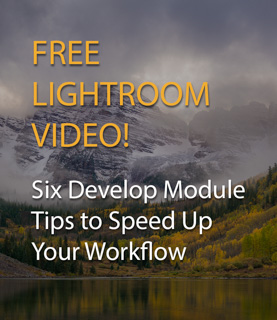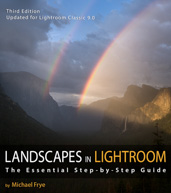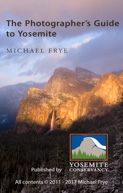by Michael Frye | Aug 7, 2011 | Advanced Techniques, Night Photography
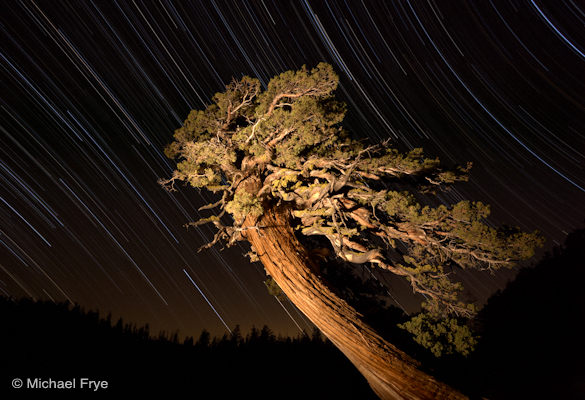
Juniper and star trails near Olmsted Point, Yosemite
Here’s a new image, made last Tuesday evening near Olmsted Point in Yosemite. My friend Mike Osborne calls this the “Bowsprit” tree. What? I didn’t get it either until he explained that a bowsprit is the bent figure with arms splayed back at the bow of old sailing ships. Okay, yeah, this does sort of resemble that.
Anyway, I “painted” this wonderful tree with a flashlight, and used the image-stacking technique to get noise-free star trails. With image stacking the idea is to take a series of short exposures and blend them together, rather than doing one long one. The total exposure time here is about 90 minutes, but one exposure that long would end up being quite noisy. Instead I took 24 four-minute exposures, with only a one-second interval between them. So each of those four-minute exposures has little noise.
(more…)
by Michael Frye | Aug 3, 2011 | Yosemite Photo Conditions
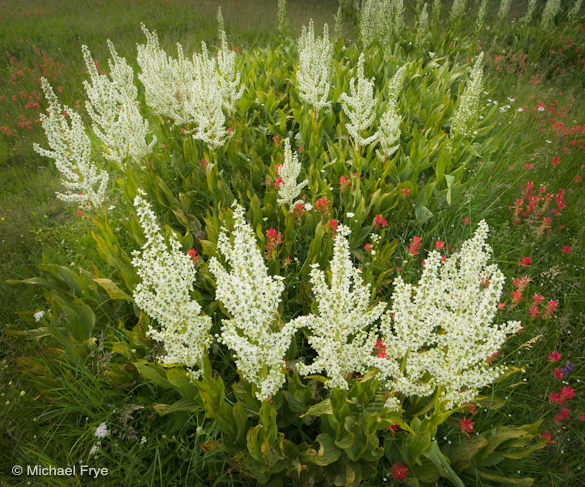
Corn lily circle
A heavy winter, wet spring, and late snowmelt have all conspired to delay the wildflower bloom in the Yosemite high country, but it’s now in full swing. It’s a fantastic year for corn lilies—those plants with the sculpted, photogenic leaves and tall stalks of white blossoms. The Crane Flat Meadows are full of them, more than I’ve ever seen before, but these flowers are abundant in all the meadows between 6000 and 8000 feet right now. I made the accompanying photos in McGurk Meadow, where I found a nice mix of corn lilies and paintbrush.
These displays just the beginning. With all the residual moisture from melting snow, it promises to be a good—though late—wildflower year. Some spots may not peak until the end of August or even the beginning of September.
(more…)
by Michael Frye | Jul 27, 2011 | Critiques
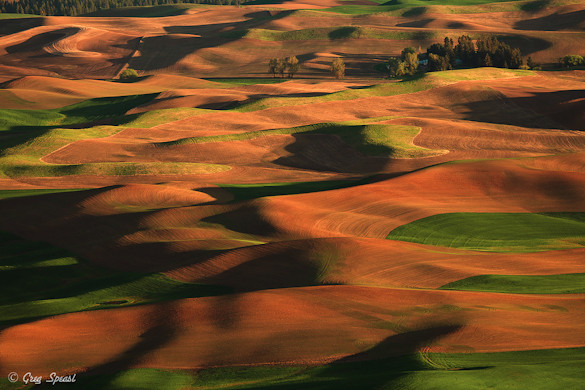
"Steptoe Beauty" by Greg Speasl
This week’s photograph, titled “Steptoe Beauty,” was made by Greg Speasl in the Palouse country of eastern Washington. The image is an interesting study of how a telephoto lens can compress space and create patterns.
Light
Sidelight is usually a great way to bring out textures, and here the low-angle, late-afternoon sun raking across the fields from right to left brings out the beautiful textures and forms of the landscape. The alternating patterns of green and amber also create a nice color contrast.
Composition
Recently I wrote about depth in photography, and how wide-angle lenses can help create an illusion of depth, while longer focal lengths can flatten the perspective and emphasize patterns. This is a great example of the latter—Greg used a telephoto lens (210mm on a full-frame sensor) to zoom in, compress the space, and pick out an intriguing pattern in the sculptured hills. In fact we see two overall patterns here, one formed by the interplay between light and dark, the other created by the color contrast between regions of green and amber.
(more…)
by Michael Frye | Jul 21, 2011 | Light and Weather, Yosemite Photo Conditions
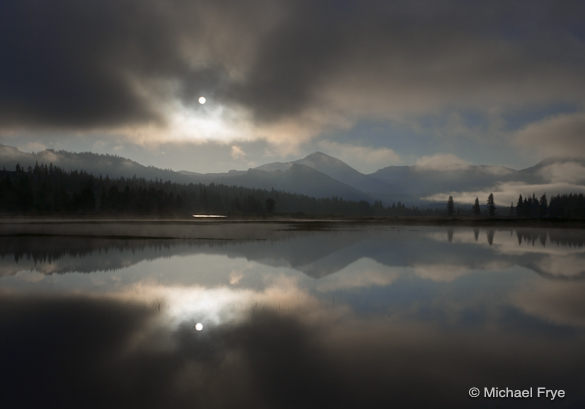
Sun breaking through mist, Tuolumne Meadows, last Friday morning
Landscape photographers have to be flexible. You can try to plan—to be at a certain place at a certain time when you expect the light to be just right. But you can’t control the weather, and the best-laid plans of photographers often fizzle behind a bank of clouds.
So when things don’t pan out the way you’d hoped, you have to adapt. We did a lot of adapting last week during my Hidden Yosemite workshop. With our heavy winter and late spring, there was still a lot of snow at higher elevations. Certain areas were just inaccessible; the Saddlebag Lake road, for example, was closed, and I heard the lake was still mostly covered in ice.
(more…)
by Michael Frye | Jul 12, 2011 | Composition, Photography Tips, Vision and Creativity
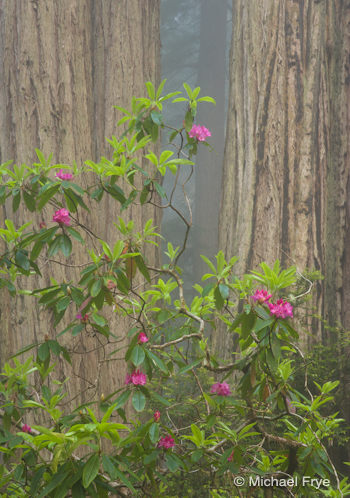
Redwoods and rhododendrons—telephoto view
A Tale of Two Photographs
Reading David duChemin’s eBook A Deeper Frame got me thinking about how we perceive depth and space in photographs, and how lens choice affects that perception.
David says that because photography turns “a world of three dimensions into two,” that “if we aim to create photographs that create within the reader a deeper, fuller, longer experience, it falls to us to recreate that depth.”
There’s no question that wide-angle lenses are better tools for creating a sense of depth in a photograph than telephoto lenses. Telephotos make objects appear closer together than they really are, compressing space and flattening the perspective. Wide-angle lenses make objects appear farther apart than they really are, expanding the sense of space, and, if used correctly, creating an illusion of depth.
These two photographs from my recent trip to the redwoods illustrate the difference. Both images include the same rhododendrons and redwoods.
In the top image I stepped back with a telephoto lens (130mm) and isolated part of the bush against two redwood trunks. It looks like the rhododendrons are only a few feet in front of the trees, but they’re not. They’re at least 20 feet away—illustrating the compression effect of the telephoto lens. The sense of depth is minimal.
(more…)






